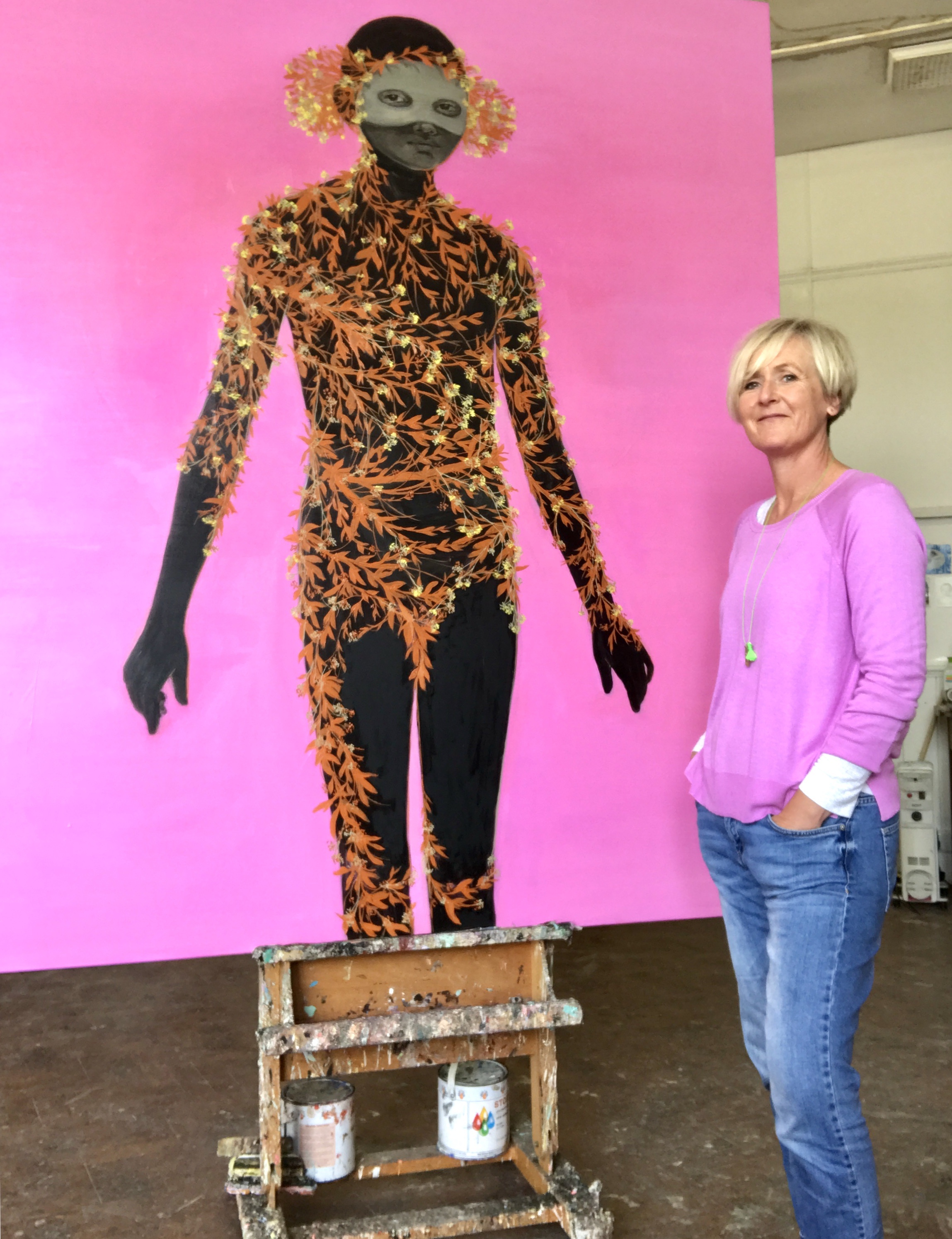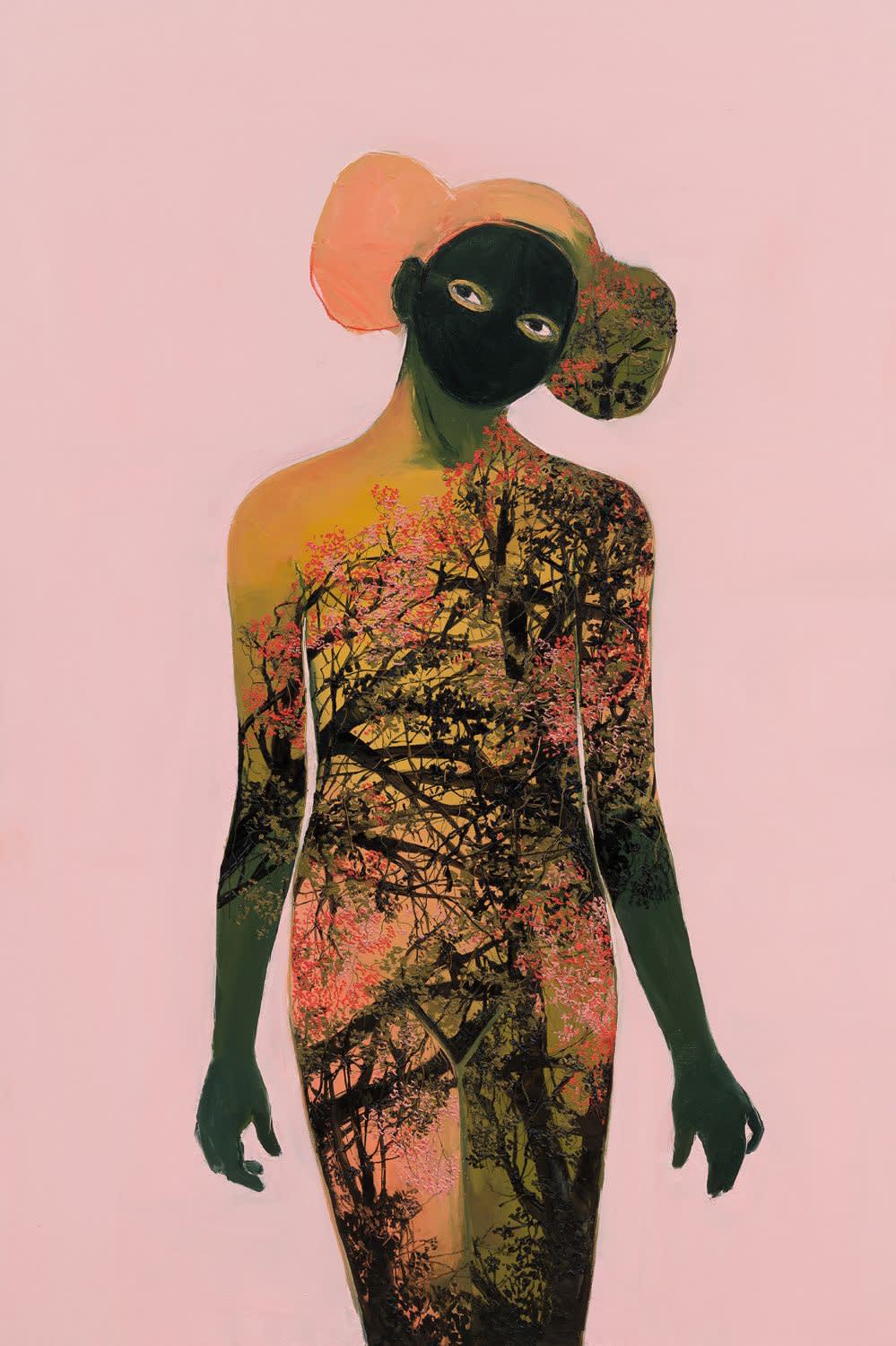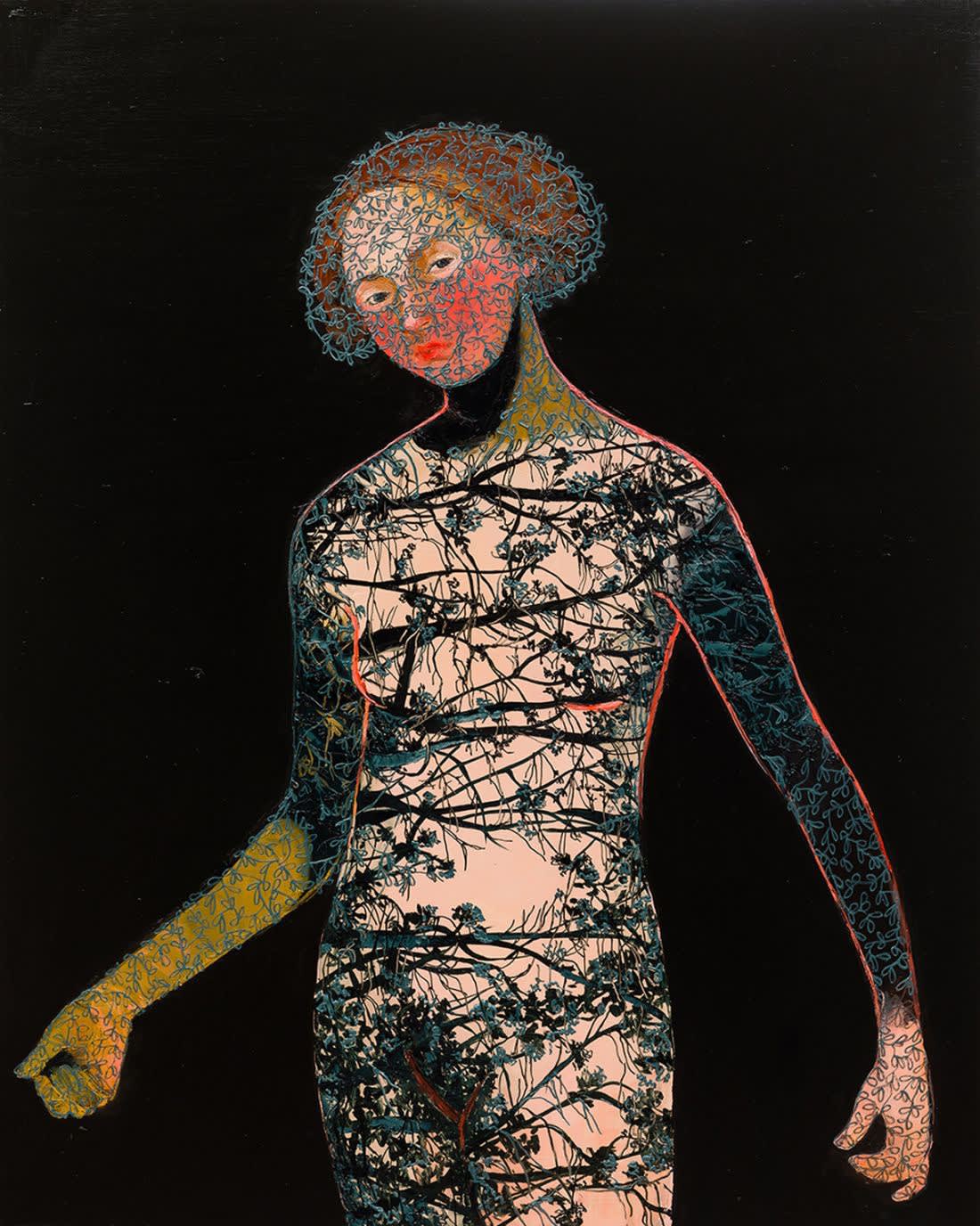LISA WRIGHT
@LISAWRIGHTART
“The figures in the recent work embody a sense of our universal connection with the landscape. They are poised between adolescence and maturity evoking the precariousness and preciousness of youth, both its vulnerability and its incredible power.”
I loved having my conversation with Lisa recently! We had a wonderful chat about her studio, the faces in her work, the royal academy, the human condition, psychology, cooking scones and more!
I’ve been a huge fan of her work for so long. I mean, WOW! The figures in her work are so beautiful, so charged and breathtaking. Often isolated they sit in a strange time between childhood and adulthood, in the purgatory between. Though standing like adults, strong and proud, and often adorned in decorative clothing, they often have childlike, flushed and angelic faces and round bellies. I see their stature as almost awkward, but fascinating and regal!
-
INTERVIEW
Tell me about your artist story LISA?
I knew from an early age that I wanted to be an artist and started art classes aged 10. Eventually I studied for seven years at Art school, culminating in three years Postgraduate at The Royal Academy Schools, London where much of my time was spent in the life room as well as drawing from the sculptures which lined the Academy corridors.
The experience of being immersed in the history of this extraordinary place helped galvanise some of the key elements of my practice:- working with history paintings; and regularly working from life. .
After graduating from the RA I moved from London with my husband and young son to a derelict chapel in Cornwall. This extraordinary building eventually became our home and studios where we have lived for over 20 years.Quick one, what 3 words would you use to describe your artwork?
Vivid, Powerful, Painterly
What is your studio like Lisa? Where do you like to create best? What are your artist necessities? What could you not live without?
The studio is my necessity. My current studio is at CAST in Helston. It’s a large bright room with high ceilings, formerly a classroom in a late Victorian school. My studio is always quite disorderly.
Perhaps conversely the chaos of the environment is conducive to finding order and refinement in the work.
I could not live without oil paint.What do you listen to while you work?
I mostly listen to radio plays and podcasts. I like having voices in the background. Other times I am happy with just my thoughts and quietness.What does an average working day look like to you?
I like to get into the studio as early as possible and get going on something straight away. I’m very disciplined with my time, which comes in part at least from having to be very organised as my two children grew up. I usually work until early evening.What part does scale play in your work?
I often explore the extremes of scale, it is crucial for the impact or intimacy of an idea.Who or what are your biggest influences, and how do you find them? How do these come out in your work?
There have been many influences over my 30 year career. Art history has played a big part in the development of my visual language; the figure has always been central to my practice and
classical sculpture and historical painting continue to inform my work.Who are the figures in your work? What are they feeling?
The figures in the recent work embody a sense of our universal connection with the landscape. They are poised between adolescence and maturity evoking the precariousness and preciousness of youth, both its vulnerability and its incredible power.What are the main themes and motifs running through your work? Is there a narrative that runs throughout?
The work speaks about the human condition and our relationship with our surroundings, balancing elements of representation with the symbolic, and using the world of appearances to explore psychological states. Underlying narratives refer to the complex transition toward adulthood using, for example, 17th Century Venetian paintings’ masks as a motif to allude to states of introspection.Tell me about your artistic process?
It begins with drawing. Externalising my thoughts and ideas in sketch books and I often make small ink or colour studies.
I usually work in ‘series’ and on several canvases at any one time. It helps me to be more intuitive and playful- often happy accidents help me find a way through.

What are you most proud of during your career?
‘Future Forest’ 2019, a public art project which marked the centenary of the Forestry Commission England. I created life size sculptures that felt as if they had stepped straight out of my paintings into the real world. These ten life size sculptures were installed throughout the forest within structures created by art director Tom Piper MBE.
What piece of advice might you give to an aspiring artist Lisa?
As in life, be true to yourself.
What is one thing people would be surprised to know about you?
I can knock out a really decent scone with my eyes shut.
If you could have a meal with any artist from any time, what would the meal be and who would it be with?
Cigarettes and burgers with Phillip Guston
What are you working on at the moment?
Having spent 3 years working on Future Forest which broke away from my usual practice, it has been wonderful to return to painting and make work on a flat surface!
What would be your dream project?
A museum project which would allow me to further explore the relationship between my painting and sculpture on an ambitious scale.

Favourite historical female artists?
There are so many...I recently saw a Dorothea Tanning exhibition at Tate Modern. It was good to be reminded of the extraordinary breadth of her powerful work. Others include Leonora Carrington , Artemisia Gentileschi, Mary Cassatt and Louise Bourgeois.
Favourite current practicing female artists?
Again, the list is long ....
Mamma Anderson Kiki smith Lisa Brice Cathie Pilkington and Lisa Yuskavage to name a few.
Who should She Curates interview next (as many as you like!)?
I have many very talented friends ...and I’m openly nepotistic!
Sarah Ball (although I believe that you’ve already featured her work)
Nicola Bealing
Shelly Tregoning
Juliette Paull
Melanie Miller
Anna Gardiner
Sarah Gillespie
Louise McClary
Charlotte Keates
Naomi Frears
Sue Williams A’Court ....
I could go on!
